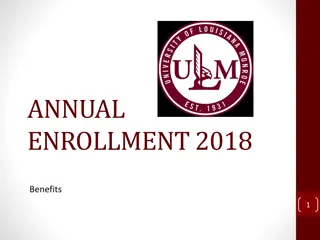Comprehensive Guide to Burn Injuries and Treatment
Burn injuries are caused by various factors such as heat, cold, electricity, chemicals, or radiation. This guide covers the pathophysiology of burns, immediate care steps, pre-hospital and hospital care, criteria for admission to a burn unit, and the impact of inhalational injuries. Learn about how to identify, treat, and manage different types of burns effectively.
Download Presentation

Please find below an Image/Link to download the presentation.
The content on the website is provided AS IS for your information and personal use only. It may not be sold, licensed, or shared on other websites without obtaining consent from the author.If you encounter any issues during the download, it is possible that the publisher has removed the file from their server.
You are allowed to download the files provided on this website for personal or commercial use, subject to the condition that they are used lawfully. All files are the property of their respective owners.
The content on the website is provided AS IS for your information and personal use only. It may not be sold, licensed, or shared on other websites without obtaining consent from the author.
E N D
Presentation Transcript
BURN Dr. Yaseen Abdullah Plastic surgeon
A burn is a type of injury to skin , or other tissues ,caused by Heat (scald or fire) Cold Electricity Chemicals Radiation
Pre hospital care Ensure rescuer safety Stop the burning process Check for other injuries Cool the burn wound Give O2 Elevate
Criteria for acute admission to a burn unit: Suspected inhalational or airway injury Any burn likely to require fluid resuscitation(15%) Any burn likely to require surgery(circumferential) Face , hand , feet , major joint or perineum burn Psychiatric patient non accidental burn Electrical chemical burns Extreme of age Preexisting medical disorder
Breathing(inhalational injury) Physiotherapy Nebulizer Warm humidified O2 Escharotomy when needed
If there is mechanical block to breathing from a circumferential chest eschar , then we have to do scoring cut through the burned skin to allow the chest to expand (escharotomy) This is not painful (burned nerves)
Circulation and fluid resuscitation Partial and full thickness burn victim of more than 15 % of the total body surface area burned will have shock and require fluid resuscitation TBSA = total body surface area
Assessment of burn size (TBSA) ACCURATE
The patients palm Not the doctor s palm
Rule of nines Not accurate but adequate for first approximation in adult only Each upper limb is 9% Each lower limb is 18% The torso is 18% each side The head and neck is 9% Genitalia is 1%
Lund browder chart Is accurate method
First degree(superficial burn) Eg. Sun burn epidermis Dry, red , painful Treated with moisturizing cream for 5 days
Second degree (partial thickness) Can be superficial or deep
Superficial partial thickness Papillary dermis Moist, pink , painful , capillary refill, blister Treated with moisturizing or antibiotic ointment for two weeks with no residual scarring
The blister of superficial partial thickness(2nd degree)burn
Deep partial thickness Reticular dermis Not moist , not blanch with pressure ,decreased sensation Treated with excision and grafting Lead to hypertrophic scar
Deep dermal burn , tangential excision Taking skin graft Skin graft over excised burn
Third degree(full thickness) All the dermis is destroyed(reach to fatty layer) Hard , leathery feel , variable color (normal to black) , no capillary refill ,no sensation(painless) Treated with excision and grafting Hypertrophic scarring
Forth degree Eg. Electrical burn Same as 3rddegree with exposed tendon, bone or muscle May require amputation
Circulation and fluid resuscitation (0.5 -1 ml/kg/hour)
escharotomy Circumferential full thickness burn to the limb require emergency surgery . The tourniquet effect of this injury is easily treated by incising the whole length of full thickness burn (escharotomy).
Topical antibiotic In non infected burn , only topical antibiotic should be used (not systemic , because of poor circulation) Silver sulphadiazine cream 1%:broad spectrum Silver nitrate solution 0.5% :need to be changed frequently , cause black staining Mafenide acetate :painful , may cause acidosis Cerium nitrate























